This article was co-authored by Pippa Elliott, MRCVS. Dr. Elliott, BVMS, MRCVS is a veterinarian with over 30 years of experience in veterinary surgery and companion animal practice. She graduated from the University of Glasgow in 1987 with a degree in veterinary medicine and surgery. She has worked at the same animal clinic in her hometown for over 20 years.
There are 9 references cited in this article, which can be found at the bottom of the page.
wikiHow marks an article as reader-approved once it receives enough positive feedback. In this case, 83% of readers who voted found the article helpful, earning it our reader-approved status.
This article has been viewed 241,662 times.
Whether you have found an injured wild rabbit or your own precious pet bunny has been injured, it is important to not try to treat the injury yourself. For wild bunnies, you should handle them as little as possible while taking them to a vet or rehabilitation center. You can do a bit more to keep your pet bunny safe and comfortable while transporting it to the vet, including examining your bunny, cleaning shallow wounds, and controlling bleeding.
Steps
Caring for a Pet Rabbit
-
1Take your injured rabbit to the vet. You may choose to treat a small shallow cut or injured claw yourself, but for just about anything else, it is always best to take your rabbit to the vet. Your job is to minimize damage and keep your rabbit as safe and comfortable as possible en route. Know your vet’s hours and have a backup plan. If your vet is not available for emergencies outside of office hours, then you should have the number of another clinic or vet that is.EXPERT TIPDr. Elliott, BVMS, MRCVS is a veterinarian with over 30 years of experience in veterinary surgery and companion animal practice. She graduated from the University of Glasgow in 1987 with a degree in veterinary medicine and surgery. She has worked at the same animal clinic in her hometown for over 20 years.Veterinarian

 Pippa Elliott, MRCVS
Pippa Elliott, MRCVS
VeterinarianPippa Elliott, a licensed veterinarian, explains: "Rabbits are easily stressed, so it's important to help them feel secure and protected on the way to the vet. Transport them in a box or carrier covered with a towel, as the darkness is like being in a burrow and comforting to them."
-
2Be aware of the less obvious signs of injury. If your rabbit is bleeding, has been bitten, or has been stepped on, you should take him to the vet. But injuries are not always so obvious, especially since rabbits have high pain thresholds and instinctively hide pain. Less obvious signs of injury include:[1] [2]
- Lying on one side for extended periods of time.
- Falling over.
- Inability to walk in a straight line.
- Limping or change in gait.
- Awkward posture.
- Licking, rubbing or scratching a particular area.
- Failure to eat or drink for 24 hours.
- Failure to pass fecal pellets for 8 hours or more.
Advertisement -
3Examine your rabbit to determine the nature of its injury. How you care for you rabbit will depend on the injury. If the injury is not immediately life threatening – i.e. the rabbit is bleeding heavily, paralyzed, or in shock – perform a brief exam:[3]
- Nose and whiskers – Both sides should look the same. Look for discharge and swelling.
- Eyes – Glassy or closed eyes are a sign of shock. Shine a light into them to see if the pupils constrict. If the whites of the eyes are yellow, this indicates a serious liver problem.
- Gums and teeth – Lift the lips to examine them. Gums should be pink and the color should return immediately if after you push on them with a fingertip. Pale gums are a sign of sock. Make sure no teeth are broken.
- Head and neck – Feel for lumps, bumps, or swelling. Head tilt may be a sign of shock or spinal injury.
- Limbs - Check for redness, heat or swelling. If none is found, run both hands down each limb from the shoulder to the toes, flexing each joint. Stop immediately if your rabbit appears to be in pain. Cold feet are a sign of shock.
- Torso – Run your hands along the ribcage and spine. Feel for swelling or abnormalities. Gently feel your rabbit’s stomach, searching for swelling or redness. Check for rapid breathing and heart beat, a sign of shock.
-
4Take your rabbit to the vet immediately if it is in shock. Shock can kill a rabbit. If its eyes are glassy or closed, its extremities cold, and its heart rate and breathing rapid, wrap it in a clean towel, place it in its carrier, call your vet and take it in.[4]
- Always place the towel and carrier beside your rabbit, so you will have to move it as little as possible.
- If you suspect your rabbit is in shock, keep him warm and minimize stress as much as possible. If possible give him a hot water bottle wrapped in a towel (so he doesn't get scorched.) Place him in a covered box, so that he doesn't feel so exposed and vulnerable which rabbits find very stressful.
-
5Wrap your rabbit in a towel if your exam discovers no obvious problems. Rabbits lose heat rapidly due to the stress of injury. If you believe your rabbit is injured, particularly if it has been kicked, stepped on, or sat upon, gently wrap it in a clean towel and take it to the vet.
- Minimize his stress by giving him a dark safe place to hide. Rabbits have been known to die from pure stress, so while you are assessing his injuries, or waiting to hear back from the vet, make him feel as safe as possible.
-
6Take care with broken bones. Do not attempt to splint broken bones, as this may cause more injury. Place the rabbit in a box so that he doesn't try to hop or move around. If the fractured ends of the bones are exposed through the skin, cover them with sterile gauze from a first aid kit. If you don't have sterile gauze then place a freshly laundered (clean) handkerchief over the bones to reduce the amount of bacterial contamination from the air. If you don't have a clean piece of fabric then leave the bones exposed but inform the vet so that they can decide if antibiotics are necessary. Never, under any circumstances attempt to push the bone ends back beneath the skin.
- If a leg is dangling, at an odd angle, or cannot move properly, this may be a sign of a spinal injury. Practice extra care when moving your rabbit onto the towel and into the carrier.
-
7Clean shallow cuts or bite wounds. If your rabbit has been bitten, the wound is only skin deep, and your rabbit is not in shock, you can take time to clean the wound before taking your rabbit to the vet. Flush the wound using iodine solution diluted in warm water to the color of iced tea. If you do not have iodine, use an antiseptic soap in warm water[5] or make up a salt water solution, which consists of one teaspoon of salt to one cup of previously boiled water.
- Be sure the water is warm, as cold water may induce shock.
- If a cut is very minor, you may clean it and treat with antibiotic ointment yourself. Be sure to check it regularly to be sure it is healing well.
-
8Apply pressure to bleeding. Particularly if the bleeding from a wound is pulsing or gushing, applying pressure may save your rabbit’s life. Using a sterile gauze pad, or a clean towel or cloth if a pad is not available, apply firm but gentle pressure to the wound. Do not remove the cloth or pad if it becomes saturated with blood. Apply another one over it and continue applying pressure. Get your rabbit to the vet as quickly as possible.[6]
- If you don't have help and need to drive to the vet, bandage the pressure pad in place.
-
9Flush burns with cool water. If a hot liquid or caustic chemical has been spilled on your rabbit, let cool running water flow over the burn for a minimum of 10 minutes. Do this before moving the rabbit to the vet as it is the most effective way of minimizing complications from a fresh burn.[7]
- Do not apply any ointments, as this will interfere with the vet’s care for your pet.
- If your bunny has suffered a burn from biting an electric cord, its mouth may be burnt or there may be fluid in the lungs. If he is breathing rapidly, the latter is more likely. Keep stress to a minimum, and place him in a well ventilated place while you fetch help.
-
10Put styptic powder such as Quick-Stop on an injured claw. If the claw has been completely torn off, you’ll want to see your vet, but a broken claw, or one that has been trimmed too close, can be dealt with at home. Apply styptic powder to stop the bleeding (it may take several applications), and check regularly to be sure the claw is healing.
Caring for Wild Rabbits
-
1Do not attempt to care for a wild rabbit yourself. First off, it is illegal to keep a wild animal unless you are licensed by your state’s Department of Environmental Protection. Secondly, caring for injured rabbits requires careful training and expertise. Without it, you will probably only make the situation worse.[8]
-
2Make certain the rabbit is wild. Almost all wild rabbits are brown with white tails. If you see a rabbit in the wild with different colors – pure white, jet black, gray, striped, spotted, or mixed – it is likely a domesticated rabbit that has escaped or been set loose. These rabbits need your help. They should be captured even if uninjured and taken to a vet to check for diseases. Afterwards, you can care for them yourself or have the rabbit adopted.[9]
-
3Be sure the rabbit is really injured. In most cases, wild animals should be left alone. Inexperienced handlers can easily fracture a rabbit’s spine picking it up. In addition, the stress of capture often hastens death. If you are going to take a wild rabbit out of its natural environment, you need to be sure it is really injured and needs your help. Some signs that a rabbit is injured include:[10]
- Lying on their sides for extended periods of time.
- Falling over or inability to run in a straight line.
- Bleeding or puncture wounds.
-
4Keep pets and children away from the animal and leave it in place if the injury is not serious. If the rabbit can move and is not bleeding copiously, it is best to leave it in place. Keep dogs and children away from the rabbit.[11]
-
5Contact a vet if the rabbit is seriously injured. If the rabbit is bleeding, lying on its side and cannot walk, or has been in a cat or dogs mouth, contact a vet. You’ll want to make sure in advance that the vet is willing to see wildlife patients. If not, the vet will usually be able to refer you to a wildlife care or rehabilitation center.[12]
-
6Wear gloves when picking up a wild rabbit. Rabbits can be infected with tularemia, a disease that can be transmitted to humans. Symptoms may include ulcers, inflamed eyes, a sore throat, diarrhea, and pneumonia. The disease can be fatal without treatment. To protect yourself, always handle wild rabbits with gloves and wash your hands with soap and water afterwards.
-
7Handle the rabbit with care. To a wild rabbit, being picked up by you seems the same as being grabbed by a hawk or other predator, and its response will be one of fear. You must handle the rabbit properly to minimize this fear and reduce the chance of injuring the rabbit further:[13]
- Do not pick the rabbit up by the ears, legs, or scruff. Instead, put one hand beneath its chest and another under its bottom. Carry it with its head slightly higher than its rear, to reduce it ability to kick out or bite you.
- Keep the rabbit close to the ground. The only time rabbits rise high off the ground in the wild is when they are captured by hawks. They don’t like it.
- Transfer the rabbit to a carrier as quickly as possible. The shorter the distance you carry the rabbit, the better. You can transport it to the vet in a basket, shoebox, or carrier. Don’t use a carrier that has been used by a cat or dog, as the smells will cause the rabbit anxiety.
Expert Q&A
Did you know you can get expert answers for this article?
Unlock expert answers by supporting wikiHow
-
QuestionWhat should I do with a rabbit that has a broken back?
 Pippa Elliott, MRCVSDr. Elliott, BVMS, MRCVS is a veterinarian with over 30 years of experience in veterinary surgery and companion animal practice. She graduated from the University of Glasgow in 1987 with a degree in veterinary medicine and surgery. She has worked at the same animal clinic in her hometown for over 20 years.
Pippa Elliott, MRCVSDr. Elliott, BVMS, MRCVS is a veterinarian with over 30 years of experience in veterinary surgery and companion animal practice. She graduated from the University of Glasgow in 1987 with a degree in veterinary medicine and surgery. She has worked at the same animal clinic in her hometown for over 20 years.
Veterinarian Unfortunately, rabbits have delicate spines which are easily fractured. The long-term outlook for a broken back is bleak, as the rabbit will be paralyzed on the back end and have no bladder or bowel control. Therefore, the humane thing to do is contact a vet, animal welfare officer, or charity to have the rabbit euthanized and save it from suffering.
Unfortunately, rabbits have delicate spines which are easily fractured. The long-term outlook for a broken back is bleak, as the rabbit will be paralyzed on the back end and have no bladder or bowel control. Therefore, the humane thing to do is contact a vet, animal welfare officer, or charity to have the rabbit euthanized and save it from suffering. -
QuestionHow can I help a rabbit with one ear cut off?
 Pippa Elliott, MRCVSDr. Elliott, BVMS, MRCVS is a veterinarian with over 30 years of experience in veterinary surgery and companion animal practice. She graduated from the University of Glasgow in 1987 with a degree in veterinary medicine and surgery. She has worked at the same animal clinic in her hometown for over 20 years.
Pippa Elliott, MRCVSDr. Elliott, BVMS, MRCVS is a veterinarian with over 30 years of experience in veterinary surgery and companion animal practice. She graduated from the University of Glasgow in 1987 with a degree in veterinary medicine and surgery. She has worked at the same animal clinic in her hometown for over 20 years.
Veterinarian The rabbit will be in pain, traumatized, and possibly suffering from blood loss. Ideally, the rabbit should be seen by a vet who can give pain relief, antibiotics, and suture the stump so that it heals more quickly. In the meantime, keep the rabbit warm and quiet (to minimize shock and stress) and bathe the stump with weak salt water to reduce the risk of infection.
The rabbit will be in pain, traumatized, and possibly suffering from blood loss. Ideally, the rabbit should be seen by a vet who can give pain relief, antibiotics, and suture the stump so that it heals more quickly. In the meantime, keep the rabbit warm and quiet (to minimize shock and stress) and bathe the stump with weak salt water to reduce the risk of infection.
Things You’ll Need
- Sterile gauze pads
- Iodine
- Antibiotic ointment
- Styptic powder
- Cage
- Cloth
- phone numbers of your local vets.
- veggies (for pets and wild animals since they could be hungry or scared)
References
- ↑ http://www.exoticpetvet.net/smanimal/rabfirstaid.html
- ↑ http://www.rabbit.org/health/pain.html
- ↑ http://www.exoticpetvet.net/smanimal/rabfirstaid.html
- ↑ http://www.exoticpetvet.net/smanimal/rabfirstaid.html
- ↑ http://www.exoticpetvet.net/smanimal/rabfirstaid.html
- ↑ http://www.exoticpetvet.net/smanimal/rabfirstaid.html
- ↑ http://www.exoticpetvet.net/smanimal/rabfirstaid.html
- ↑ http://hopline.org/rabbit-health-and-care/what-do-i-do-if-i-find-a-wild-rabbit/
- ↑ http://www.humanesociety.org/animals/rabbits/tips/solving_problems_rabbits.html
About This Article
To care for your injured rabbit, flush small wounds with warm water and antiseptic soap. If your rabbit is still bleeding, apply pressure with a sterile gauze pad or clean cloth, and if your rabbit has a burn, flush the affected area with cool running water. As you care for your rabbit, be sure watch out for signs of shock, which can be fatal. If your rabbit has glassy eyes, cold limbs, or rapid heart rate and breathing, get to a vet right away! For more advice from our Veterinary reviewer, including how to treat small wounds on your own, or care for a wild rabbit, read on.
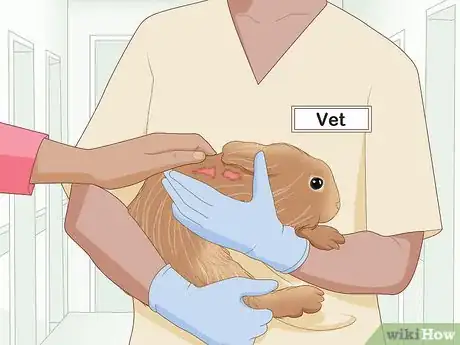
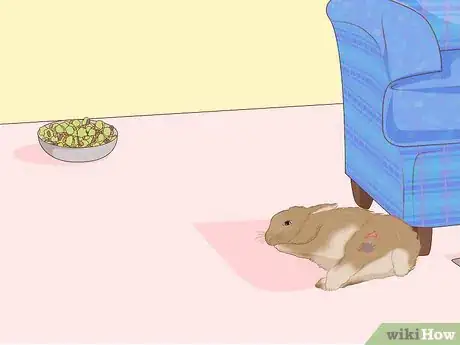
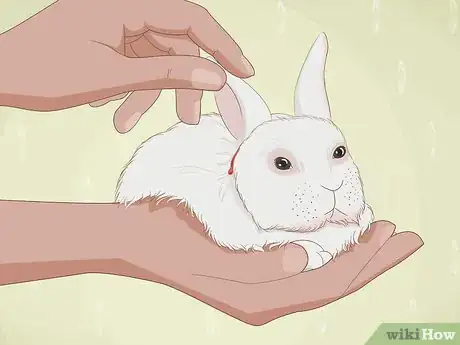
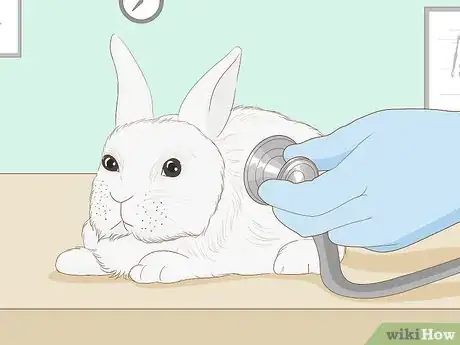
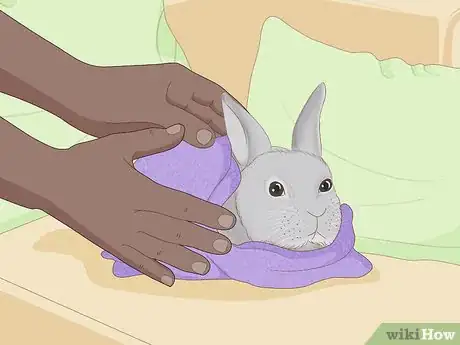
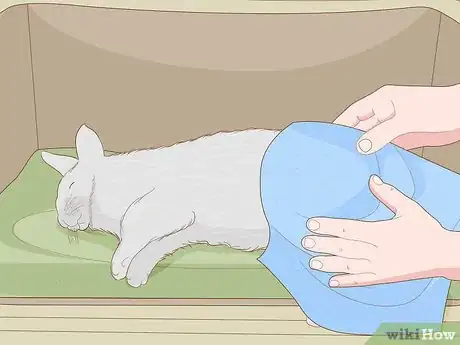
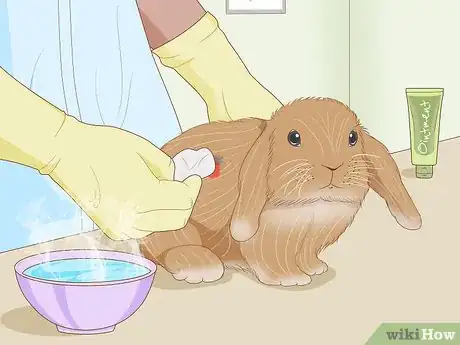
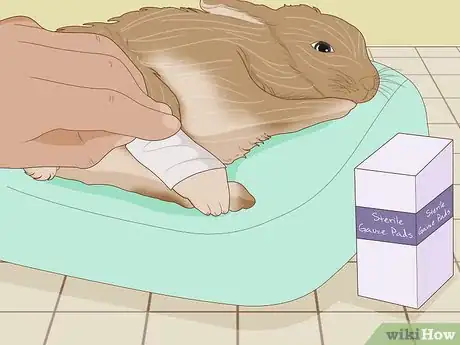
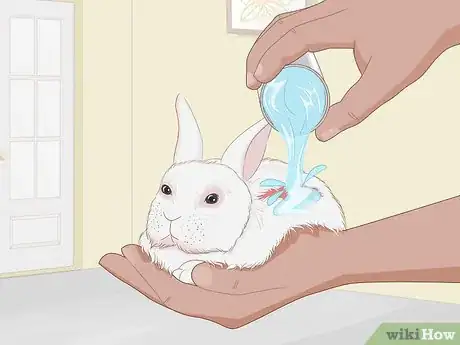
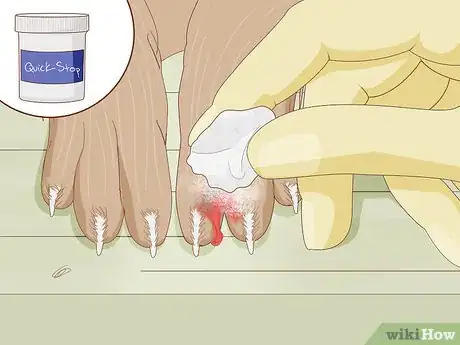
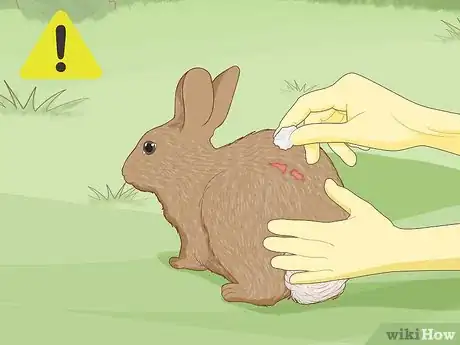

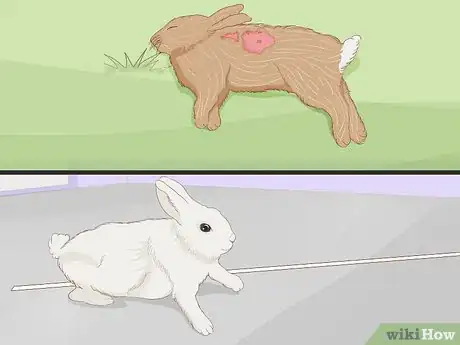
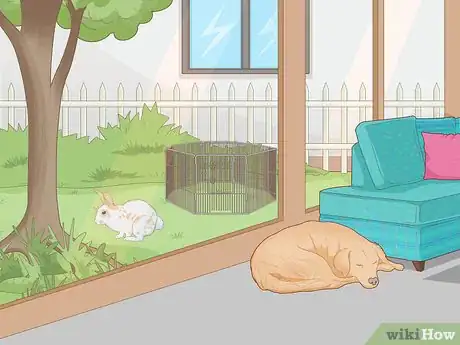
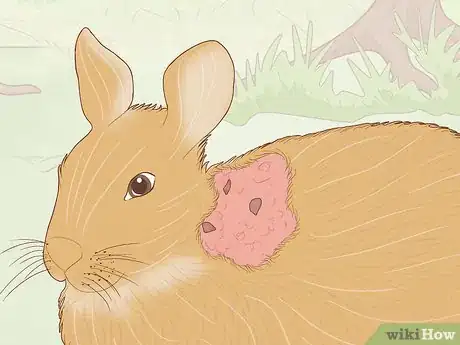
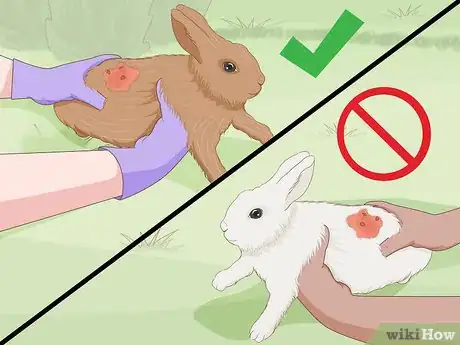
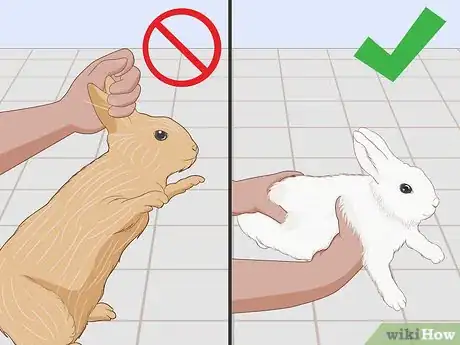
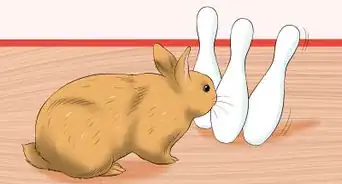
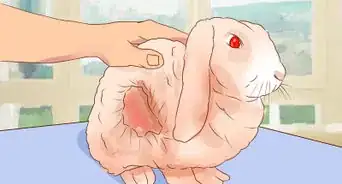
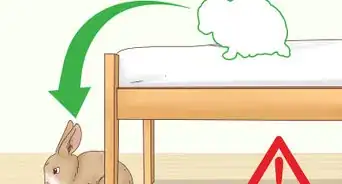
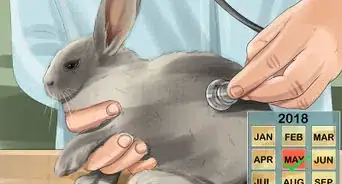
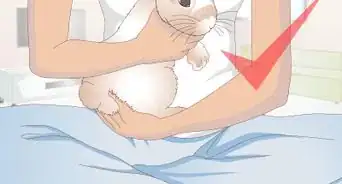
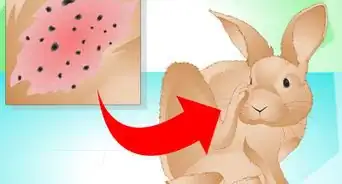
-in-Rabbits-Step-12.webp)

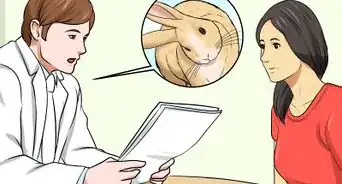
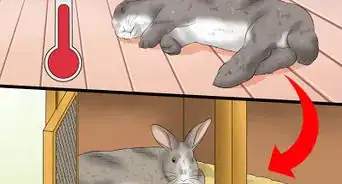











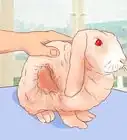
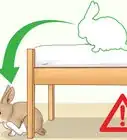
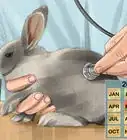



































Medical Disclaimer
The content of this article is not intended to be a substitute for professional medical advice, examination, diagnosis, or treatment. You should always contact your doctor or other qualified healthcare professional before starting, changing, or stopping any kind of health treatment.
Read More...